What do onions tell us about our origins? (CT Scan, Episode 73)
A popular argument for “junk DNA” says that since onions have more non-coding DNA than humans, but are less complex than humans, onions’ DNA must be mostly useless junk. Therefore, the non-coding DNA in humans is likely junk as well. Let’s think through this argument biblically and critically.
___________
DIGGING DEEPER
• Purdom, G. (2014). Decoding the Debris. https://answersingenesis.org/genetics/junk-dna/decoding-debris/
• All “junk DNA” articles: https://answersingenesis.org/genetics/junk-dna/
• All genetics articles: https://answersingenesis.org/genetics/
• Parker, G. (2006). The Origin of Life: DNA and Protein. https://answersingenesis.org/origin-of-life/dna-and-protein/ (Chapter from Creation: Facts of Life. Available to read online for free here: https://answersingenesis.org/answers/books/creation-facts-of-life/)
• Gitt, W. (2006). The Origin of Biological Information and of Life. https://answersingenesis.org/origin-of-life/56-the-origin-of-biological-information-and-of-life/ (Chapter from Did God Use Evolution? Observations from a Scientist of Faith. Available to read online for free here: https://answersingenesis.org/answers/books/did-god-use-evolution/)
• All origin of life articles: https://answersingenesis.org/origin-of-life/
• Transposable element information:
o Purdom, G. (2006) Human Endogenous Retroviruses (HERVs)—Evolutionary “Junk” or God’s Tools? https://answersingenesis.org/genetics/junk-dna/human-endogenous-retroviruses-hervs-gods-tools/
o Walkup, L. (2000). ‘Junk’ DNA: Evolutionary Discards or God’s Tools? https://answersingenesis.org/genetics/junk-dna/junk-dna-evolutionary-discards-or-gods-tools/
o Mitchell, E. (2015). Endogenous Retroviruses: Key to Mammalian Brain Development? https://answersingenesis.org/biology/microbiology/endogenous-retroviruses-key-to-mammalian-brain-development/
o Bartlett, J. (2009). Towards a Creationary Classification of Mutations. https://answersingenesis.org/genetics/mutations/towards-a-creationary-classification-of-mutations/
___________
CITED REFERENCES
• T. Ryan Gregory, “The Onion Test,” Genomicron, April 25, 2007.
• Graur, D. (2017). Rubbish DNA: The functionless fraction of the human genome. In Evolution of the Human Genome I (pp. 19-60). Springer, Tokyo.
• Thomas CA. 1971. The genetic organization of chromosomes. Annu. Rev. Genet. 5:237– 256. (As cited in Graur, 2017).
• Dufresne, F., & Jeffery, N. (2011). A guided tour of large genome size in animals: what we know and where we are heading. Chromosome research, 19(7), 925-938.
• Blommaert, J., Riss, S., Hecox-Lea, B., Welch, D. M., & Stelzer, C. P. (2019). Small, but surprisingly repetitive genomes: transposon expansion and not polyploidy has driven a doubling in genome size in a metazoan species complex. BMC genomics, 20(1), 1-12.
• Cho, J. (2018). Transposon-derived non-coding RNAs and their function in plants. Frontiers in Plant Science, 9, 600.
• Sundaram, V., & Wysocka, J. (2020). Transposable elements as a potent source of diverse cis-regulatory sequences in mammalian genomes. Philosophical Transactions of the Royal Society B, 375(1795), 20190347.
___________
FREE e-BOOK
Sign up for our email newsletter and get a free copy of Patricia’s eBook, “How to Think About Facts that Challenge your Faith”
https://answersingenesis.lpages.co/how-to-think-about-facts-that-challenge-your-faith-ebook/
___________
BLOG
See Patricia’s blog posts here: https://answersingenesis.org/blogs/patricia-engler/
___________
DONATIONS
https://answersingenesis.ca/donate
___________
ANSWERS TV
Patricia’s Critical Thinking Course based on these videos is available on Answers.TV. Sign up for your free trial and check it out!
#pengleraig
-
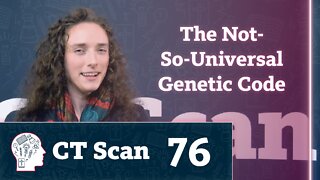 5:06
5:06
Answers in Genesis Canada
2 years agoDoes “same genetic code” mean “same ancestor?” (CT Scan, Episode 76)
58 -
 4:34
4:34
Answers in Genesis Canada
2 years agoThe Power of Conformity (CT Scan, Episode 23)
64 -
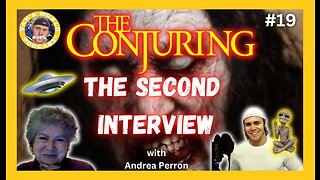 1:07:21
1:07:21
Van's World Podcast
1 year agoThe Conjuring Origins 2nd Interview - with Andrea Perron | Episode 19
22 -
 23:28
23:28
EpsteinsEggShapedPecker
7 months agoDoomsday Network Anons - Episode 1
174 -
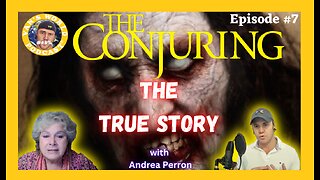 2:28:55
2:28:55
Van's World Podcast
1 year agoThe Conjuring Origins - with Andrea Perron | Episode 7
48 -
 4:52
4:52
Answers in Genesis Canada
2 years agoCritical Thinking Rule #3: Follow Up (CT Scan, Episode 4)
26 -
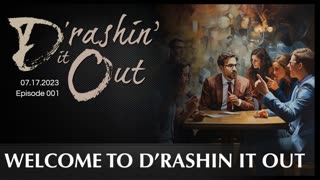 31:04
31:04
DrashinItOut
6 months agoEpisode 1: Origin Story
35 -
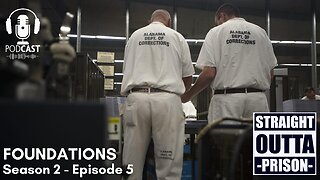 1:04:36
1:04:36
Straight Outta Prison Podcast
1 year agoFoundations • Season 2 • Episode 5
10 -
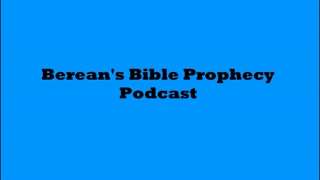 15:58
15:58
Bereans Bible Prophecy Podcast
1 year agoEpisode #1 - Introduction - The Search for Truth
2 -
 1:50:34
1:50:34
Blasters and Blades Podcast
10 months agoArchived Episode 12: Yanez & Chaney ship off to The Orion Colony
46